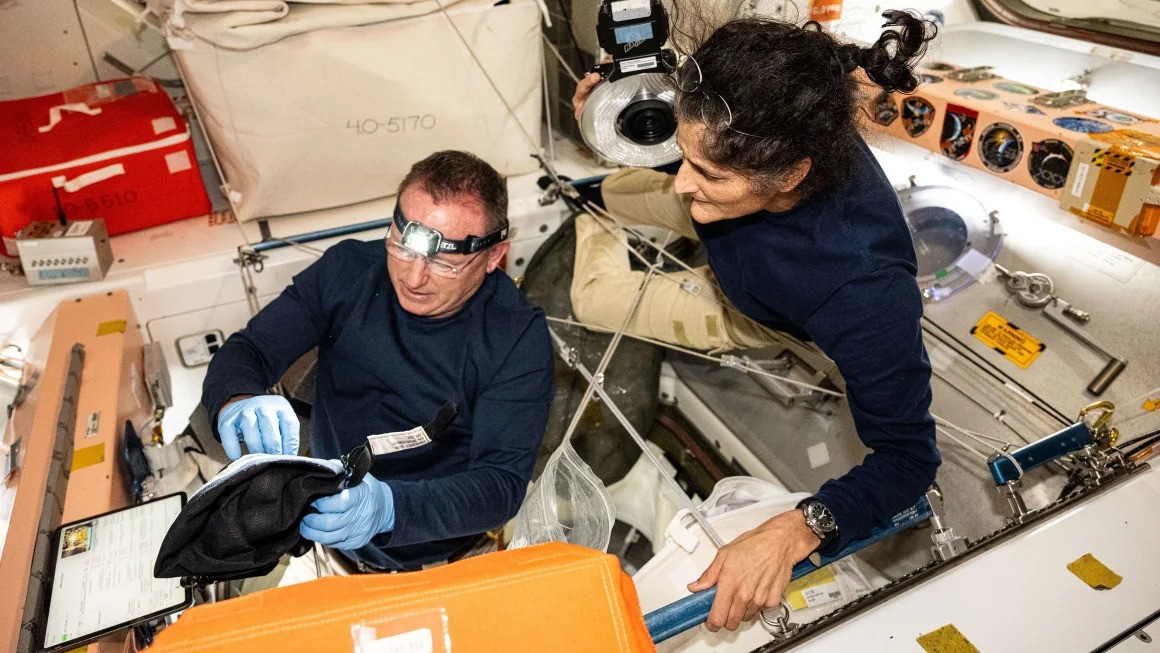A SpaceX Capsule Just Returned to Earth: Why Boeing Starliner Astronauts Were Left Behind
USA NEWS – In a remarkable turn of events, a SpaceX Crew Dragon capsule, on a mission designated Crew-8, has just completed its journey back to Earth after a successful mission to the International Space Station (ISS). However, amid the excitement of this achievement, the question remains: why were Boeing’s Starliner astronauts, NASA’s Suni Williams and Butch Wilmore, not aboard the spacecraft?
The Journey Begins
The story of Williams and Wilmore’s journey began back in June when they launched to the ISS as part of Boeing’s inaugural crewed flight of the Starliner spacecraft. Their initial mission was expected to last only a week. However, unforeseen technical challenges, including gas leaks and thruster issues, significantly complicated their return plans.
NASA, assessing the risks associated with these problems, ultimately made the difficult decision to leave the Starliner behind at the ISS. Instead, they opted to send Williams and Wilmore back to Earth aboard the SpaceX Crew Dragon. This decision was not taken lightly; it involved extensive evaluations and contingency planning, reflecting the complexities inherent in modern spaceflight.
Crew-8 and the Waiting Game
The Crew-8 mission, which recently splashed down off the coast of Florida, involved four astronauts who had been stationed on the ISS since March. These crew members—NASA’s Matthew Dominick, Michael Barratt, and Jeanette Epps, along with Alexander Grebenkin of Roscosmos—had been part of a regular rotation, a stark contrast to Williams and Wilmore’s extraordinary circumstances.
While the Crew-8 team returned home, Williams and Wilmore found themselves in a prolonged wait. Their situation highlighted the unique challenges faced by astronauts in space and the rigorous planning required to ensure safe and efficient missions.
A New Assignment: Crew-9
Williams and Wilmore are now set to return home on a different mission, designated Crew-9. The Crew-9 capsule had to be reconfigured to accommodate them, a task that involved altering astronaut assignments and ensuring adequate resources for their eventual return. This mission, which launched on September 28, signifies a shift in strategy for NASA and SpaceX.
Dana Weigel, NASA’s manager of the International Space Station Program, noted the meticulous planning involved. “A couple of years ago, we made the decision to ensure that we had the right resources, supplies, and training for the crew, just in case they needed to stay on the ISS longer than anticipated,” she explained during an August briefing.
With their return scheduled no earlier than February 2025, Williams and Wilmore are now preparing to continue their work aboard the ISS as part of Expedition 72, transitioning from guests to active crew members.
Adapting to New Roles
Upon their arrival at the ISS, Williams and Wilmore took on roles that include conducting spacewalks, maintaining the station, and participating in a variety of scientific experiments. Since becoming part of Expedition 72, both astronauts have seamlessly integrated with the existing crew. Williams even assumed the position of commander of the ISS on September 22.
During their time in space, Williams and Wilmore have already logged over 18 weeks aboard the ISS. Their extended stay not only showcases their resilience but also their adaptability in a high-stakes environment. “We are fully trained,” Williams stated confidently, reflecting on their preparedness for the challenges ahead.
Scientific Contributions and Personal Reflections
In addition to their routine duties, the astronauts have actively engaged in scientific research. An October 18 update from NASA revealed that Williams conducted a cognitive test and checked hardware connections, while Wilmore operated a fluorescence microscope to study particle interactions. These tasks are critical for advancing our understanding of various scientific phenomena and improving life both on Earth and in space.
Both astronauts have a deep commitment to their work. Williams expressed her passion for space exploration, sharing, “This is my happy place. I love being up here in space. It’s just fun.” Wilmore echoed her sentiments, demonstrating a remarkable ability to remain positive in the face of unexpected delays.
The Reality of Extended Stays in Space
The situation faced by Williams and Wilmore is not without precedent. Many astronauts have encountered extended stays aboard the ISS due to various circumstances. NASA astronaut Frank Rubio, for instance, was initially scheduled for a six-month mission but ended up spending an unprecedented 371 days in orbit due to a coolant leak on his Russian Soyuz capsule. Such incidents highlight the unpredictable nature of space travel and the adaptability required of astronauts.
When asked about their feelings regarding the extended wait, Wilmore expressed a calm acceptance, stating, “I’m not gonna fret over it. I mean, there’s no benefit to it at all.” Williams, meanwhile, candidly shared her emotional connection to space travel, recalling her tears upon leaving the ISS after her last mission in 2012.
Looking Ahead
As Williams and Wilmore prepare for their eventual return home, they remain committed to their roles aboard the ISS, contributing to the ongoing research and operations of the international space community. Their story is one of resilience, adaptation, and the spirit of exploration that drives humanity to push the boundaries of what is possible.
In the grand scheme of space exploration, the journey of Boeing’s Starliner astronauts serves as a reminder of the complexities and challenges involved in human spaceflight. It underscores the importance of thorough preparation, flexibility, and the unwavering dedication of those who venture into the unknown.
As we look forward to their return, Williams and Wilmore’s journey continues to inspire and captivate, reminding us all of the wonders of space and the indomitable human spirit. Their ongoing contributions to the ISS and their unique experiences will undoubtedly leave a lasting impact on future space missions and the next generation of explorers.

